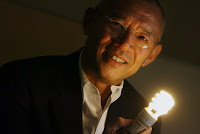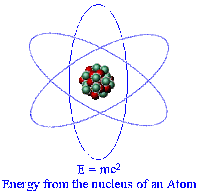 The Bush administration dropped its support for a $1.8 billion planned 275-megawatt coal-fired plant power plant designed to store greenhouse gases underground, because of ballooning costs. This decision comes about a month after the private partners in the project picked Mattoon, Illinois as the site for the project. Congress appropriated $108 million for the plant that was authorized by the Energy Policy Act of 2005, but the cost of the project has doubled and other technologies could be better. The Center would like to see a conversion plant that converts carbon dioxide into gasoline. FutureGen is one of the most advanced projects for determining whether emissions of carbon dioxide, a greenhouse gas, can be captured from coal-fired plants and stored, or sequestered, underground. The Center will examine whether CO2 to gasoline conversion qualifies for the FutureGen project. By contrast, the FutureGen project is a nonprofit venture that included 13 utilities and coal companies constructing of a plant that would turn coal to gas, strip out and store underground the carbon dioxide that contributes to climate change, and then burn the remaining gas to produce electricity and hydrogen.
The Bush administration dropped its support for a $1.8 billion planned 275-megawatt coal-fired plant power plant designed to store greenhouse gases underground, because of ballooning costs. This decision comes about a month after the private partners in the project picked Mattoon, Illinois as the site for the project. Congress appropriated $108 million for the plant that was authorized by the Energy Policy Act of 2005, but the cost of the project has doubled and other technologies could be better. The Center would like to see a conversion plant that converts carbon dioxide into gasoline. FutureGen is one of the most advanced projects for determining whether emissions of carbon dioxide, a greenhouse gas, can be captured from coal-fired plants and stored, or sequestered, underground. The Center will examine whether CO2 to gasoline conversion qualifies for the FutureGen project. By contrast, the FutureGen project is a nonprofit venture that included 13 utilities and coal companies constructing of a plant that would turn coal to gas, strip out and store underground the carbon dioxide that contributes to climate change, and then burn the remaining gas to produce electricity and hydrogen.The project is a joint venture between a private industry alliance, which would cover 26 percent of the cost and the Department of Energy, which was supposed to cover 74 percent. Half of the nation's electricity is produced by coal-fired plants so dealing with the carbon dioxide for is important for reducing this main greenhouse gas emission that is producing climate change. The cost was first estimated in 2004 at $950 million and the $1.8 billion final cost estimate assumed that construction costs escalate at a 5.2 percent annual rate. DOE has refused to issue a record of decision on the environmental impact statement, which blocks development of the project. DOE has decided to pay the cost of adding carbon capture and storage technology to new or existing coal plants bigger than 300 megawatts. (The Washington Post) (The Washington Post)







